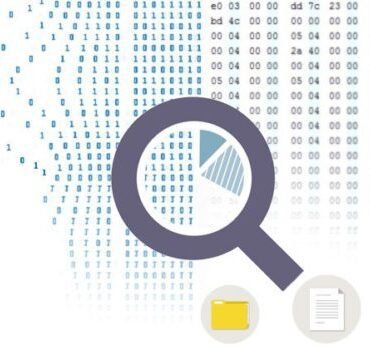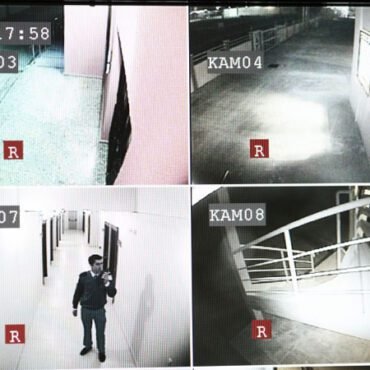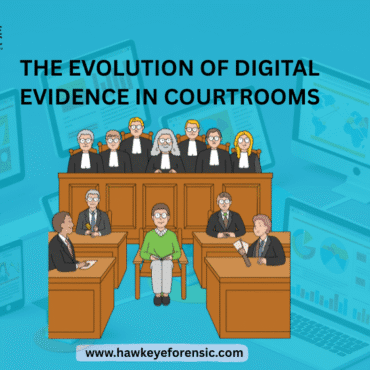
File Carving in Data Recovery: How Experts Retrieve Lost Data
The Science Behind File Carving in Data Recovery In the digital age, data is one of the most valuable assets. From personal photos to critical business documents, losing data can ...


Blog Ayushi Agrawal todayOctober 3, 2025

Digital forensics has become one of the most important areas in today’s world of cybercrime, corporate fraud, and digital investigations. Whether it is law enforcement investigating a crime, corporations dealing with insider threats, or individuals trying to recover data, digital forensics plays a crucial role in finding the truth hidden in electronic devices.
But unlike other technical fields, digital forensics leaves no room for error. Even a small mistake can compromise evidence, alter data, or make findings inadmissible in court. Investigators must follow strict technical and legal standards to ensure that the evidence they collect remains authentic and reliable.
In this blog, we’ll explore some of the most common mistakes in digital forensics and provide actionable tips on how to avoid them. By mastering these lessons, investigators can strengthen their work and maintain the highest standards of credibility in their reports.
One of the biggest mistakes in digital forensics is mishandling the chain of custody. This refers to the documentation process that records who handled the evidence, when, and how.
Mistake: Investigators often fail to record every transfer or use informal methods of evidence handling.
Consequence: If questioned in court, the evidence may be considered tampered with and therefore inadmissible.
How to Avoid: Always maintain a standardised chain of custody form, log every detail including timestamps, and ensure evidence is sealed in tamper-proof packaging.
Another common mistake is performing analysis directly on the original evidence.
Mistake: Investigators sometimes analyse the actual hard drive, phone, or storage media instead of its copy.
Consequence: This risks accidental modification or corruption of crucial data.
How to Avoid: Always create a forensic image (bit-by-bit copy) of the evidence. Use hardware write blockers to prevent any changes, and keep the original evidence securely stored.
Forensic tools are powerful but must be used correctly.
Mistake: Over-reliance on a single tool or using outdated, unverified software.
Consequence: Leads to incomplete analysis, missed artefacts, or misinterpretation of data.
How to Avoid: Cross-verify findings with multiple tools such as Autopsy, Sleuth Kit, EnCase, or FTK. Always keep tools updated and validate their accuracy before using them in real cases.
Digital forensics is not only about technical analysis but also about how well the process is documented.
Mistake: Failing to maintain detailed logs of steps taken during the investigation.
Consequence: Creates gaps in the investigative process that can be challenged in court.
How to Avoid: Document every step, capture screenshots of important findings, and record the exact tool versions and procedures used.
Volatile data, such as information stored in RAM, can hold vital clues about ongoing activities.
Mistake: Many investigators focus only on hard drives and ignore volatile memory.
Consequence: Loss of data about running processes, malware, and network connections.
How to Avoid: Use tools like Volatility or FTK Imager to capture memory dumps. During incident response, always prioritize volatile data before shutting down systems.
Digital forensics often overlaps with incident response.
Mistake: Lack of communication between incident responders and forensic investigators.
Consequence: Evidence may be collected too late, or attackers may erase their traces.
How to Avoid: Build a proper incident response plan, assign clear roles, and ensure rapid evidence collection during live incidents.
Evidence must always be analysed in context.
Mistake: Jumping to conclusions based only on isolated data.
Consequence: Leads to false accusations or overlooking important details.
How to Avoid: Reconstruct timelines using tools like Plaso/Log2Timeline—Cross-check metadata, logs, and user activity before concluding. Always consider multiple data points.
Digital forensics is as much about law as it is about technology.
Mistake: Collecting evidence without following proper legal frameworks or regional laws.
Consequence: Violates privacy rights, making evidence unusable in court.
How to Avoid: Understand and comply with laws such as the Indian Evidence Act, IT Act, GDPR, or HIPAA, depending on jurisdiction. Always consult with legal experts for sensitive cases.
Not all evidence is in plain sight.
Mistake: Investigators sometimes focus only on visible files and ignore hidden or deleted data.
Consequence: Important artefacts like deleted emails, hidden partitions, or steganographic data may be missed.
How to Avoid: Use data carving tools like PhotoRec, Foremost, Scalpel, and search unallocated space, slack space, and hidden partitions.
Technology is constantly evolving, and so are cybercriminals’ tactics.
Mistake: Relying on outdated knowledge or skipping formal training.
Consequence: Investigators may fail to recognise modern techniques used by attackers.
How to Avoid: Invest in certifications such as CHFI, EnCE, ACE, GCFA, and regularly update skills through training and workshops. Practice with real-world forensic case studies and stay updated with industry news.
Digital forensics is a profession where accuracy, integrity, and discipline matter more than anything else. From maintaining the chain of custody to ensuring proper tool usage and legal compliance, investigators must avoid common mistakes that can compromise their cases.
By following best practices—such as creating forensic images, documenting every step, and continuously upgrading skills—digital forensic professionals can ensure that their work stands strong in both technical accuracy and legal reliability.
Remember, in digital forensics, even the smallest mistake can mean the difference between justice served and justice denied.
Written by: Ayushi Agrawal
Tagged as: data recovery, Chain of Custody, Digital forensics, Digital evidence, Incident response, Cyber Forensics, Forensic Tools.

Data Recovery Omprakash Singh
The Science Behind File Carving in Data Recovery In the digital age, data is one of the most valuable assets. From personal photos to critical business documents, losing data can ...

Blog Omprakash Singh

Blog Omprakash Singh
Copyright 2016-2025 all rights reserved by Hawk Eye Forensic.
Post comments (0)